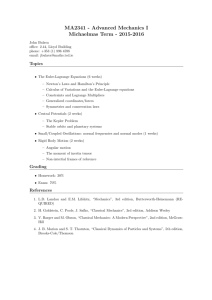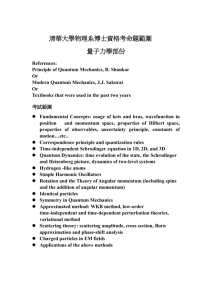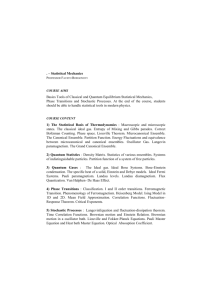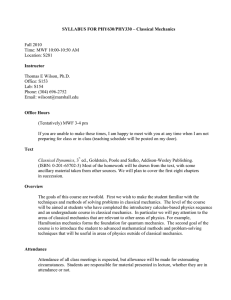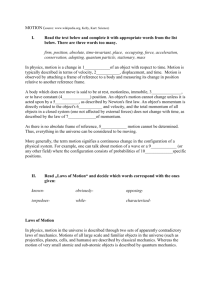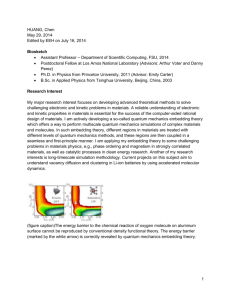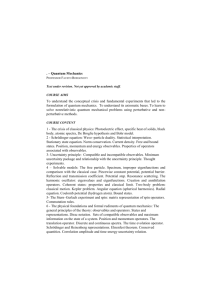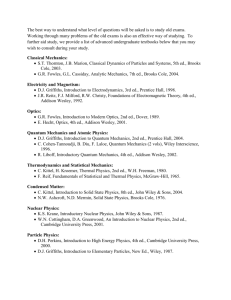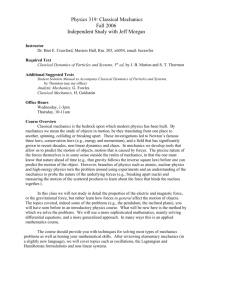Comments on the Physics exams and orals SIS 2015 The written
advertisement
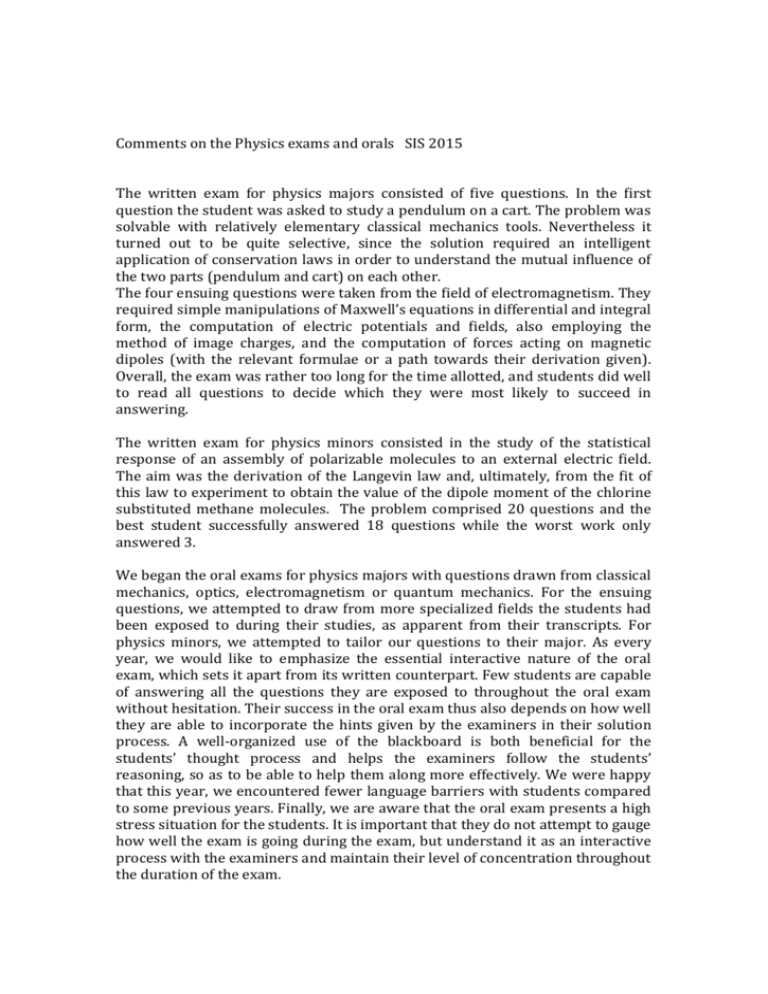
Comments on the Physics exams and orals SIS 2015 The written exam for physics majors consisted of five questions. In the first question the student was asked to study a pendulum on a cart. The problem was solvable with relatively elementary classical mechanics tools. Nevertheless it turned out to be quite selective, since the solution required an intelligent application of conservation laws in order to understand the mutual influence of the two parts (pendulum and cart) on each other. The four ensuing questions were taken from the field of electromagnetism. They required simple manipulations of Maxwell’s equations in differential and integral form, the computation of electric potentials and fields, also employing the method of image charges, and the computation of forces acting on magnetic dipoles (with the relevant formulae or a path towards their derivation given). Overall, the exam was rather too long for the time allotted, and students did well to read all questions to decide which they were most likely to succeed in answering. The written exam for physics minors consisted in the study of the statistical response of an assembly of polarizable molecules to an external electric field. The aim was the derivation of the Langevin law and, ultimately, from the fit of this law to experiment to obtain the value of the dipole moment of the chlorine substituted methane molecules. The problem comprised 20 questions and the best student successfully answered 18 questions while the worst work only answered 3. We began the oral exams for physics majors with questions drawn from classical mechanics, optics, electromagnetism or quantum mechanics. For the ensuing questions, we attempted to draw from more specialized fields the students had been exposed to during their studies, as apparent from their transcripts. For physics minors, we attempted to tailor our questions to their major. As every year, we would like to emphasize the essential interactive nature of the oral exam, which sets it apart from its written counterpart. Few students are capable of answering all the questions they are exposed to throughout the oral exam without hesitation. Their success in the oral exam thus also depends on how well they are able to incorporate the hints given by the examiners in their solution process. A well-organized use of the blackboard is both beneficial for the students’ thought process and helps the examiners follow the students’ reasoning, so as to be able to help them along more effectively. We were happy that this year, we encountered fewer language barriers with students compared to some previous years. Finally, we are aware that the oral exam presents a high stress situation for the students. It is important that they do not attempt to gauge how well the exam is going during the exam, but understand it as an interactive process with the examiners and maintain their level of concentration throughout the duration of the exam. The level of physics questions asked to students who take physics as a minor is of course lower or much lower than for physics majors. Very often, questions are posed on classical mechanics. We were pleased to find that a majority of students this year displayed a reasonably good command of classical mechanics. Questions on quantum mechanics often are unsatisfactorily answered. Quantum mechanics is taught at ENS during the bachelor course, which means that a good knowledge and understanding of this field of physics is required at the entrance of the ENS Master programme. In the future, more emphasis will be put on quantum mechanics during the SIS examination to make sure that the successful SIS student can fully benefit from the ENS Master programme.
